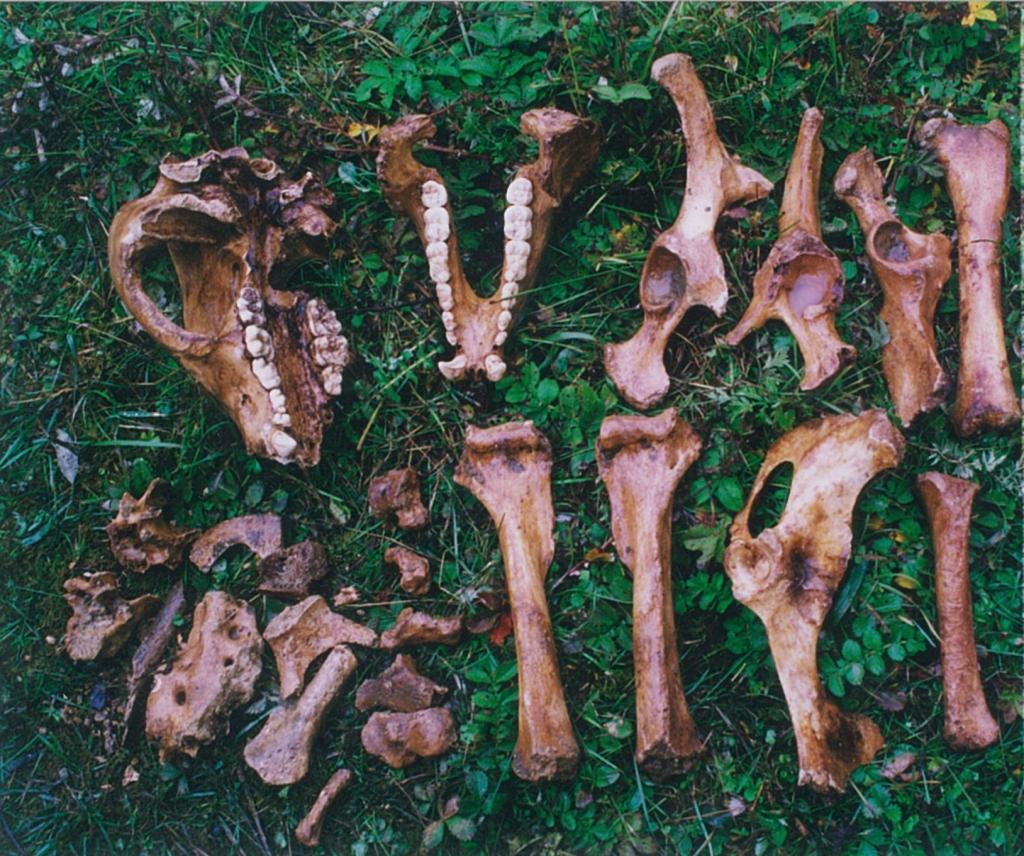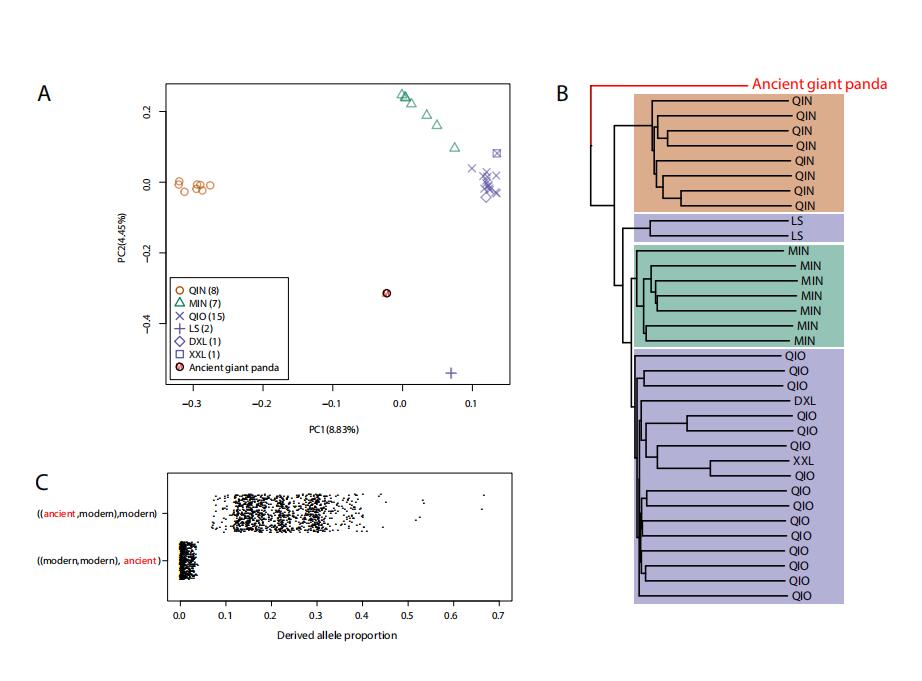
(Photo of specimens is provided by Prof. Ji Xueping at Yunnan Cultural Relics and Archaeology Institute.)
A team of scientists at China University of Geosciences (Wuhan), collaborated with researchers from the University of Potsdam and Yunnan Cultural Relics and Archaeology Institute etc., have sequenced the first genome of an ancient giant panda. The research has been online in a scientific journal of “Current Biology” on May 9, 2019.
Fossil records show that giant panda were once far more widespread, as northward to Zhoukoudian, Beijing, and southward to Vietnam and Laos. The current habitats of giant panda are restricted to only the mountain ranges on the eastern margin of the Tibetan plateau. The 5,000 year old specimen studied in this research was found in a sinkhole in China’s Yunnan Province, hundreds of kilometres away from giant panda’s current habitat. It represents the latest record in this geographical area.

The panda bone had accumulated huge levels of contaminating microbial DNA over the thousands of years it spent deposited in the sinkhole. To help them get to the panda DNA, the researchers used bleach – the same chemical people use as a household cleaner – to selectively destroy the contaminant DNA and reveal the genetic make up of the ancient panda in a coverage of 1.2 fold.
Analysis of the ancient genome revealed that the 5,000-year-old panda belonged to a previously undiscovered and genetically distinct group, or population, of pandas, which indicates that although the species survives, it is with only a fraction of the genetic diversity that once existed. Moreover, the divergent event of the ancestor population of this extinct lineage and the common ancestor population of the modern pandas occurred earlier than 0.3 million years ago, when the three populations of modern pandas split. Because study of present-day pandas can only reveal the history of their direct ancestors, this vanished population had been hidden until now. Admixture test shows that this extinct lineage interbred with the ancestors of modern pandas millennia ago, and thus parts of the genome in the extinct population survives in the genome of its modern relatives.
This research was funded by the Nation Natural Science Foundation of China(41672017), the “PPP” project jointly founded by the CSC and DAAD (2016-2041), and ERC consolidator grant “gene flow” (310763). The field exploration carried in 2005 were jointly sponsored by US National Science Foundation (DEB-0103795) andthe Fundamental Science Research Foundation of Yunnan Province (601197).